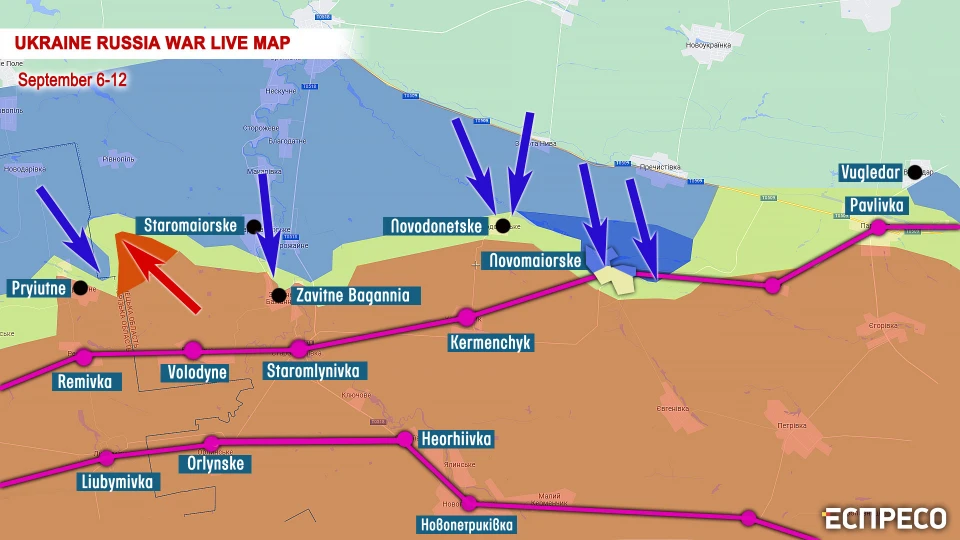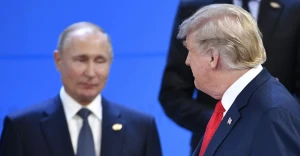
Autumn-winter military campaign and factors that will affect it – military expert Zgurets
There's no need to completely remove the enemy from the entire land corridor. However, it's crucial to make it very challenging for the remaining Russian troops to stay in the temporarily occupied areas, with risky logistics. This will serve as the foundation for the Armed Forces' upcoming campaign in 2024
Frontline situation update
Let's begin with the current combat operations. The Ukrainian Armed Forces continued their offensive in the south, specifically in the Donetsk and Zaporizhzhia regions. They made progress in the Klishchiivka and Andriivka areas, southwest of Bakhmut. Additionally, they expanded their presence along the Avdiivka-Donetsk line in Opytne. The military leadership reports that these positions are being reinforced.
On the other hand, the enemy has been launching attacks in the northeast of Ukraine, spanning from Kupyansk to Svatove and Kreminna. Despite intense fighting, there haven't been any significant changes in the frontline in this region. It's noteworthy that in the past week, Ukraine has managed to destroy more than 220 enemy artillery systems and over 260 vehicles. These are the highest enemy losses in a single week since the active phase of the conflict with Russia began over 18 months ago.
Foreign military experts are now closely analyzing what the Ukrainian Armed Forces might do in their offensive. Several key factors will greatly influence the upcoming autumn-winter campaign in 2024.
Firstly, at a minimum, the Armed Forces and Defense Forces need to advance far enough in their southern offensive to establish strong control over the Sea of Azov coastline.

It's not necessary to completely push the enemy out of the entire land corridor, but it's crucial to make it extremely challenging for them to maintain their troops on this route and to make logistics risky. This will lay the foundation for the 2024 campaign.
Secondly, it's evident that the success of Ukraine's offensive, both this year and the next, will depend on having an ample supply of ammunition and a variety of drone systems.

Incidentally, both Russia and Ukraine have entered into an ammunition race with their allies to replenish their artillery shell stocks. Estimates indicate that there may be a potential shortage of ammunition in 2024, considering the needs of both sides.
Thirdly, the frontline situation will be influenced by Ukraine's and Russia's ability to mobilize, train, and deploy additional troops to compensate for losses and bolster their reserves. It's understood that Ukraine and its partners need to update and adjust their approaches to training Ukrainian units, possibly even revising the tactics considering the specifics of Russian defense. This is a significant and complex topic.
Finally, our success will also hinge on the willingness of our allies to continue providing military support to Ukraine. Factors like the supply of weapons, readiness of forces and reserves, and consistent and substantial support for Ukraine will play a crucial role in shaping the frontline situation in both the short and long term.
Serhiy Tamarin, a Ukrainian soldier, explained that assault operations are the toughest and bloodiest part of warfare. Those on the front lines face the most challenging situations. Successful assaults require careful planning, good artillery preparation, the latest technology, effective battle management, cooperation among units, and the smart use of drones. A well-prepared unit can inflict significant losses on the enemy, both in terms of people and equipment. This is why the Ukrainian Armed Forces rely on the strategy of using their strengths in unique ways. Ukraine doesn't have more soldiers or better equipment than its adversaries, so it must focus on using advanced technology to outmatch the enemy.
He also mentioned that to avoid heavy casualties, modern technology and a coordinated system of drones for reconnaissance and attacks are crucial. Using drones at sea can also shift the balance of power in the Black and Azov seas. Ukraine is moving towards a strategy that leverages advanced technology to minimize Ukrainian casualties and quickly defeat the enemy.
Tamarin emphasized the importance of commanders, particularly those in middle ranks, on the battlefield. Training soldiers to use technology isn't too difficult because Ukraine has a wealth of intellectual resources. Western studies provide valuable knowledge, but Ukraine's unique circumstances demand rapid adaptation to turn theoretical knowledge into practical effectiveness.
Sea Breeze training
Let's begin with the ongoing situation in the Black Sea, where eight countries, including Ukraine, are currently conducting joint exercises for the third day. We'll also discuss Ukraine's efforts to regain control of the "Boyko Towers" from the enemy. Joining us for this conversation is Andriy Ryzhenko, an expert from the Center for Defense Strategies, a retired Navy Captain of the 1st rank, and former Deputy Chief of Staff of the Ukrainian Armed Forces Navy.
Read also: What is Sea Breeze and why are they important for deterring Russians in the Black Sea?
Andriy Ryzhenko emphasized the significance of conducting training in a region near active conflict zones. It underscores our partners' readiness to support Ukraine during this challenging period. The first series of Sea Breeze exercises took place in Great Britain earlier this summer. Currently, the exercises are being held in the Danube Delta, within the territorial waters of Ukraine and Romania. An important aspect being addressed is ensuring safe navigation in the Danube's waters, as this river serves as a crucial route for exporting Ukrainian agricultural products. These Sea Breeze exercises originated from the Riverin exercise, a traditional joint effort between the navies of Ukraine and Romania since 2018. Riverin exercises were primarily focused on river-based operations.
According to Captain Ryzhenko, these exercises send a strong signal to the Russian Federation. They demonstrate the solidarity and support of our partner nations participating in Sea Breeze today. While these exercises involve small tactical maneuvers, they carry significant strategic implications.
"Boyko Towers"
Ryzhenko pointed out that these towers were actively utilized by the enemy for economic and military purposes after they were seized in March 2014. Initially, when we cut off gas supplies from mainland Ukraine to Crimea, these rigs were the sole source of gas for powering the peninsula, providing an annual volume of 2-2.5 billion cubic meters, a substantial amount equivalent to Moldova's yearly consumption. Over time, this volume decreased as the Russians constructed a gas pipeline from the Krasnodar Territory in 2017, possibly anticipating that we would eventually put an end to this gas diversion. In essence, we did just that. Last year, when Harpoon missiles struck these towers, gas production in the area by the Russians ceased.
He pointed out that the invaders at that time recognized our missile capabilities and, as a result, relocated all their ships to the Crimean peninsula, keeping them at a distance of more than 250 km from our coast. If they did position ships closer, they did so under the protection of their air defense systems.
Ryzhenko noted that the Boyko Towers were situated in a gray area because we, having displaced surface ships, understood that Russia had air superiority. For instance, the Russians consistently targeted Zmiinyi Island. Consequently, it made sense to install sensors and continuously monitor the situation around these towers. If the enemy approached this location, we could respond promptly. Unfortunately, at present, we cannot use them for their intended purpose or maintain any personnel contingent there.
- News












































